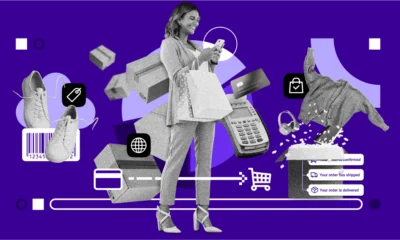APPS
ByteDance & TikTok have secretly built a Deepfakes maker
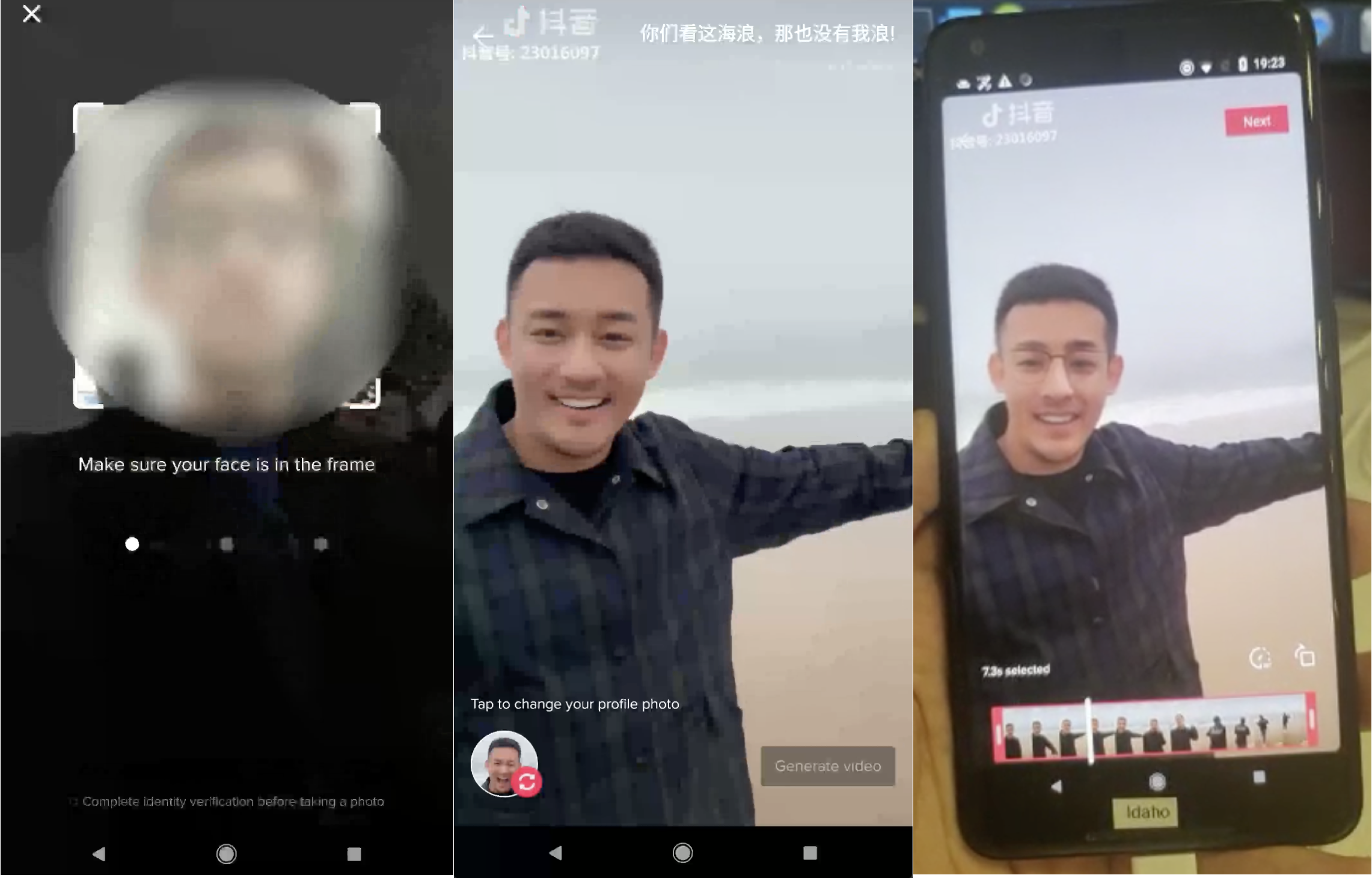
TikTok parent company ByteDance has teamed up with one of the most controversial apps to let you insert your face into videos starring someone else. TechCrunch has learned that ByteDance has developed an unreleased feature using life-like Deepfakes technology that the app’s code refers to as Face Swap. Code in both TikTok and its Chinese sister app Douyin asks users to take a multi-angle biometric scan of their face, then choose from a selection of videos they want to add their face to and share.

Users scan themselves, pick a video, and have their face overlaid on the body of someone in the clip with ByteDance’s new Face Swap feature
The Face Swap option was built atop the API of Chinese Deepfakes app Zao, which uses artificial intelligence to blend one person’s face into another’s body as they move and synchronize their expressions. Zao went viral in September despite privacy and security concerns about how users’ facial scans might be abused.
The Deepfakes feature, if launched in Douyin and TikTok, could create a more controlled environment where face swapping technology plus a limited selection of source videos can be used for fun instead of spreading misinformation. It might also raise awareness of the technology so more people are aware that they shouldn’t believe everything they see online. But it’s also likely to heighten fears about what Zao and ByteDance could do with such sensitive biometric data — similar to what’s used to set up FaceID on iPhones. Zao was previously blocked by China’s WeChat for presenting “security risks”.
Several other tech companies have recently tried to consumerize watered-down versions of Deepfakes. The app Morphin lets you overlay a computerized rendering of your face on actors in GIFs. Snapchat offered a FaceSwap option for years that would switch the visages of two people in frame, or replace one on camera with one from your camera roll, and there are standalone apps that do that too like Face Swap Live. Then last month, TechCrunch spotted Snapchat’s new Cameos for inserting a real selfie into video clips it provides, though the results aren’t meant to look confusingly realistic.
But ByteDance’s teamup with Zao could bring convincingly life-like Deepfakes to TikTok and Douyin, two of the world’s most popular apps with over 1.5 billion downloads.

Zao in the Chinese iOS App Store
Hidden Inside TikTok and Douyin
TechCrunch received a tip about the news from Israeli in-app market research startup Watchful.ai. The company had discovered code for the Deepfakes feature in the latest version of TikTok’s and Douyin’s Android apps. Watchful.ai was able to activate the code in Douyin to generate screenshots of the feature, though it’s not currently available to the public.
First, users scan their face into TikTok. This also serves as an identity check to make sure you’re only submitting your own face so you can’t make unconsented Deepfakes of anyone else using an existing photo or a single shot of their face. By asking you to blink, nod, and open and close your mouth while in focus and proper lighting, Douyin can ensure you’re a live human and create a manipulable scan of your face that it can stretch and move to express different emotions or fill different scenes.

You’ll then be able to pick from videos ByteDance claims to have the rights to use, and it will replace the face of whoever’s in the clip with your own. You can then share or download the Deepfake video, though it will include an overlayed watermark the company claims will help distinguish the content as not being real.
Code in th apps reveals that the Face Swap feature relies on the Zao API. There are many references to this API including strings like:
zaoFaceParams
/media/api/zao/video/create
enter_zaoface_preview_page
isZaoVideoType
zaoface_clip_edit_page
Watchful also discovered unpublished updates to TikTok and Douyin’s terms of service that cover privacy and usage of the Deepfakes feature. Inside the US version of TikTok’s Android app, English text in the code explains the feature and some of its terms of use:
“Your facial pattern will be used for this feature. Read the Drama Face Terms of Use and Privacy Policy for more details. Make sure you’ve read and agree to the Terms of Use and Privacy Policy before continuing. 1. To make this feature secure for everyone, real identity verification is required to make sure users themselves are using this feature with their own faces. For this reason, uploaded photos can’t be used; 2. Your facial pattern will only be used to generate face-change videos that are only visible to you before you post it. To better protect your personal information, identity verification is required if you use this feature later. 3. This feature complies with Internet Personal Information Protection Regulations for Minors. Underage users won’t be able to access this feature. 4. All video elements related to this feature provided by Douyin have acquired copyright authorization.”

ZHEJIANG, CHINA – OCTOBER 18 2019 Two us senators have sent a letter to the us national intelligence agency saying TikTok could pose a threat to us national security and should be investigated. Visitors visit the booth of douyin(Tiktok) at the 2019 smart expo in hangzhou, east China’s zhejiang province, Oct. 18, 2019.- PHOTOGRAPH BY Costfoto / Barcroft Media (Photo credit should read Costfoto / Barcroft Media via Getty Images)
A longer terms of use and privacy policy was also found in Chinese within Douyin. Translated into English, some highlights from the text include:
-
“The ‘face-changing’ effect presented by this function is a fictional image generated by the superimposition of our photos based on your photos. In order to show that the original work has been modified and the video generated using this function is not a real video, we will mark the video generated using this function. Do not erase the mark in any way.”
-
“The information collected during the aforementioned detection process and using your photos to generate face-changing videos is only used for live detection and matching during face-changing. It will not be used for other purposes . . . And matches are deleted immediately and your facial features are not stored.”
-
“When you use this function, you can only use the materials provided by us, you cannot upload the materials yourself. The materials we provide have been authorized by the copyright owner”.
-
“According to the ‘Children’s Internet Personal Information Protection Regulations’ and the relevant provisions of laws and regulations, in order to protect the personal information of children / youths, this function restricts the use of minors”.
We reached out to TikTok and Douyin for comment regarding the Deepfakes feature, when it might launch, how the privacy of biometric scans are protected, the age limit, and the nature of its relationship with Zao. However, TikTok declined to answer those questions. Instead a spokesperson insisted that “after checking with the teams I can confirm this is definitely not a function in TikTok, nor do we have any intention of introducing it. I think what you may be looking at is something slated for Douyin – your email includes screenshots that would be from Douyin, and a privacy policy that mentions Douyin. That said, we don’t work on Douyin here at TikTok.” They later told TechCrunch that “The inactive code fragments are being removed to eliminate any confusion”, which implicitly confirms that Face Swap code was found in TikTok.
A Douyin spokesperson told TechCrunch that “Douyin has no cooperation with Zao” despite references to Zao in the code. They also denied that the Face Swap terms of service appear in TikTok despite TechCrunch reviewing code from the app showing those terms of service and the feature’s functionality.
This is suspicious, and doesn’t explain why code for the Deepfakes feature and special terms of service in English for the feature appear in TikTok, and not just Douyin where the app can already be activated and a longer terms of service was spotted. TikTok’s US entity has previously denied complying with censorship requests from the Chinese government in contradiction to sources who told the Washington Post and that TikTok did censor some political and sexual content at China’s behest.

It’s possible that the Deepfakes Face Swap feature never officially launches in China or the US. But it’s fully functional, even if unreleased, and demonstrates ByteDance’s willingness to embrace the controversial technology despite its reputation for misinformation and non-consensual pornography. At least it’s restricting the use of the feature by minors, only letting you face-swap yourself, and preventing users from uploading their own source videos. That avoid it being used to create dangerous misinformation Deepfakes like the one making House Speaker Nancy Pelosi seem drunk.
“It’s very rare to see a major social networking app restrict a new, advanced feature to their users 18 and over only” Watchful.ai co-founder and CEO Itay Kahana tells TechCrunch. “These deepfake apps might seem like fun on the surface, but they should not be allowed to become trojan horses, compromising IP rights and personal data, especially personal data from minors who are overwhelmingly the heaviest users of TikTok to date.”
TikTok has already been banned by the US Navy and ByteDance’s acquisition and merger of Musically into TikTok is under investigation by the Comittee On Foreign Investment In The United States. Deepfake fears could further heighten scrutiny.
With the proper safeguards, though, face-changing technology could usher in a new era of user generated content where the creator is always at the center of the action. It’s all part of a new trend of personalized media that could be big in 2020. Social media has evolved from selfies to Bitmoji to Animoji to Cameos and now consumerized Deepfakes. When there are infinite apps and videos and notifications to distract us, making us the star could be the best way to hold our attention.
APPS
Best ASO Tips To Boost Your App Search In 2022

You need your application to be really effective in the overpopulated application market. Then, at that point, you will have to drive downloads to endure. So when it’s all said and done, you must account for yourself. Get your application the consideration it merits.
The uplifting news, however, is that customers love to download applications – last year, we downloaded in excess of 200 billion applications around the world, and that figure is set to increment to 258 billion every year by 2022 as cell phone reception increments.
Assuming you need to be seen and have your application downloaded by however many clients as could reasonably be expected, then, at that point, you should begin by taking a gander at the application store.
Underneath, we’ve assembled probably the best application store improvement methods to assist you with creating more downloads in 2021 and then some…
Start with Your Application Name
The odds are you as of now have an extraordinary name for your application, yet an appropriately advanced application is about significantly more than marking.
Assuming you need to amplify transparency and guarantee you’re showing up when clients look for applications like yours, you ought to remember the primary keywords for your application name or title, comparable to how you’d make a title label while improving a site page.
You could begin with your application name so it tends to be plainly recognized, thus it appears on the home screen of gadgets.
Then, at that point, you can add a scramble or vertical bar prior to adding a few pertinent watchwords to your speciality, or even put your application name in quotes as we did with FORE Business Golf Networking.
Urge Users to Leave Reviews
You could ask for reviews by clients through the means of your site, or through an in-application notice toward the finish of their meeting, yet make sure to restrict the number of pop-ups you execute with the goal that you don’t disturb or disappoint your clients, as this could urge them to erase your application.
We’d support all application engineers and entrepreneurs to react to criticism on their applications, as this can further develop client relations and resolve issues in an open arena.
Zero in on Your Application Depiction
Your application depiction is your principle assemblage of text your landing page content, in a manner of speaking. Utilize a site like KeywordTool.io to discover information on your picked catchphrases to expand your openness. As portrayals are shortened, ensure you remember the main data for the initial three lines of your depiction, and afterwards add things like social confirmation, emoticon, and suggestions to take action to build commitment and downloads.
Incorporate Appealings Screen Captures
Pictures and recordings won’t help your application rank, yet they will expand changes and assist clients with working out whether it’s an application they truly need.
There’s a little guide in empowering clients toward downloading your application if in any case, they’re not going to interface with it, or download and leave a negative survey when they understand it wasn’t what was promoted.
Assuming you need to ‘tart up’ your item page, then, at that point, you can add marking and extra text and data and designs to your recordings and screen capture, yet they ought not to diminish your item.
Pay for App Store or Play Store
As we have SEO and pay-per-click, you need to work one next to the other (one is a gradual methodology with long haul benefits – the other is a speedy success yet requires an endless spending plan), application store promotions can be utilized to get the message out with regards to your new programming and assist you with positioning at the highest point of query items pages – in front of your opposition and enormous names in the application world.
Keep in mind, you’ll need to focus on the right crowd and art an advertisement that will assist you with changing over and that since you’re paying for situations, that doesn’t mean clients will download or cooperate with your application.
Wrapping Up!
You can employ a group of App Store Optimization Services suppliers to benefit a scope of application store improvement administrations, including watchword advancement, resource enhancement, and restriction to guarantee your application is seen by individuals that matter.
We have long periods of involvement in creating and showcasing applications and have assisted different customers with expanding their downloads by infiltrating rewarding and regularly undiscovered business sectors.
Author:
Prachi Gupta likes to write information about Digital Marketing Trends that can help audience to grow their business.
APPS
WhatsApp will finally let users encrypt their chat backups in the cloud
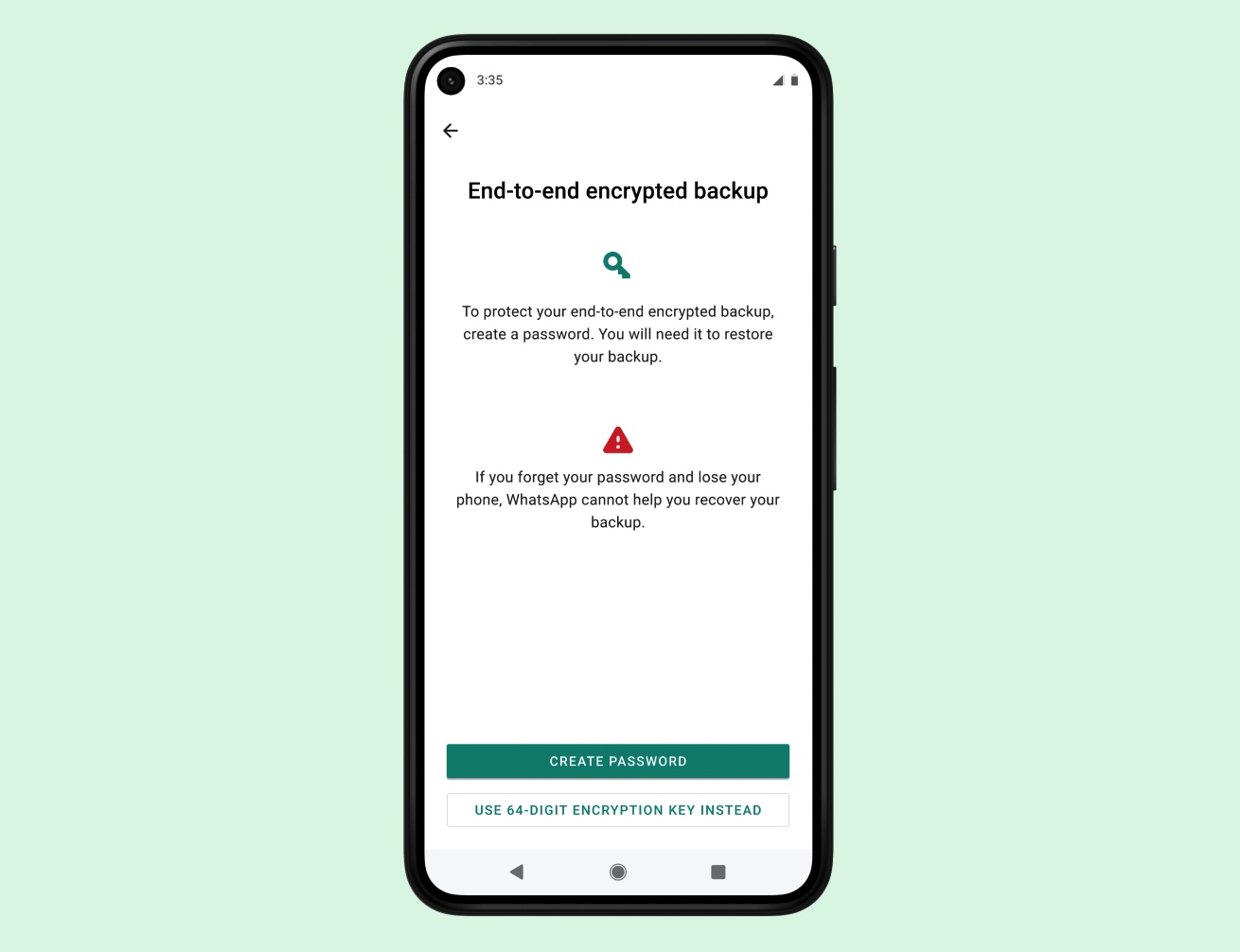
WhatsApp said on Friday it will give its two billion users the option to encrypt their chat backups to the cloud, taking a significant step to put a lid on one of the tricky ways private communication between individuals on the app can be compromised.
The Facebook-owned service has end-to-end encrypted chats between users for more than a decade. But users have had no option but to store their chat backup to their cloud — iCloud on iPhones and Google Drive on Android — in an unencrypted format.
Tapping these unencrypted WhatsApp chat backups on Google and Apple servers is one of the widely known ways law enforcement agencies across the globe have for years been able to access WhatsApp chats of suspect individuals.
Now WhatsApp says it is patching this weak link in the system.
“WhatsApp is the first global messaging service at this scale to offer end-to-end encrypted messaging and backups, and getting there was a really hard technical challenge that required an entirely new framework for key storage and cloud storage across operating systems,” said Facebook’s chief executive Mark Zuckerberg in a post announcing the new feature.
Store your own encryption keys
The company said it has devised a system to enable WhatsApp users on Android and iOS to lock their chat backups with encryption keys. WhatsApp says it will offer users two ways to encrypt their cloud backups, and the feature is optional.
In the “coming weeks,” users on WhatsApp will see an option to generate a 64-digit encryption key to lock their chat backups in the cloud. Users can store the encryption key offline or in a password manager of their choice, or they can create a password that backs up their encryption key in a cloud-based “backup key vault” that WhatsApp has developed. The cloud-stored encryption key can’t be used without the user’s password, which isn’t known by WhatsApp.

Image Credits: WhatsApp/supplied
“We know that some will prefer the 64-digit encryption key whereas others want something they can easily remember, so we will be including both options. Once a user sets their backup password, it is not known to us. They can reset it on their original device if they forget it,” WhatsApp said.
“For the 64-digit key, we will notify users multiple times when they sign up for end-to-end encrypted backups that if they lose their 64-digit key, we will not be able to restore their backup and that they should write it down. Before the setup is complete, we’ll ask users to affirm that they’ve saved their password or 64-digit encryption key.”
A WhatsApp spokesperson told TechCrunch that once an encrypted backup is created, previous copies of the backup will be deleted. “This will happen automatically and there is no action that a user will need to take,” the spokesperson added.
Potential regulatory pushback?
The move to introduce this added layer of privacy is significant and one that could have far-reaching implications.
End-to-end encryption remains a thorny topic of discussion as governments continue to lobby for backdoors. Apple was reportedly pressured to not add encryption to iCloud Backups after the FBI complained, and while Google has offered users the ability to encrypt their data stored in Google Drive, the company allegedly didn’t tell governments before it rolled out the feature.
When asked by TechCrunch whether WhatsApp, or its parent firm Facebook, had consulted with government bodies — or if it had received their support — during the development process of this feature, the company declined to discuss any such conversations.
“People’s messages are deeply personal and as we live more of our lives online, we believe companies should enhance the security they provide their users. By releasing this feature, we are providing our users with the option to add this additional layer of security for their backups if they’d like to, and we’re excited to give our users a meaningful advancement in the safety of their personal messages,” the company told TechCrunch.
WhatsApp also confirmed that it will be rolling out this optional feature in every market where its app is operational. It’s not uncommon for companies to withhold privacy features for legal and regulatory reasons. Apple’s upcoming encrypted browsing feature, for instance, won’t be made available to users in certain authoritarian regimes, such as China, Belarus, Egypt, Kazakhstan, Saudi Arabia, Turkmenistan, Uganda and the Philippines.
At any rate, Friday’s announcement comes days after ProPublica reported that private end-to-end encrypted conversations between two users can be read by human contractors when messages are reported by users.
“Making backups fully encrypted is really hard and it’s particularly hard to make it reliable and simple enough for people to use. No other messaging service at this scale has done this and provided this level of security for people’s messages,” Uzma Barlaskar, product lead for privacy at WhatsApp, told TechCrunch.
“We’ve been working on this problem for many years, and to build this, we had to develop an entirely new framework for key storage and cloud storage that can be used across the world’s largest operating systems and that took time.”
APPS
Dispo launches a test to gauge user interest in selling their photos as NFTs
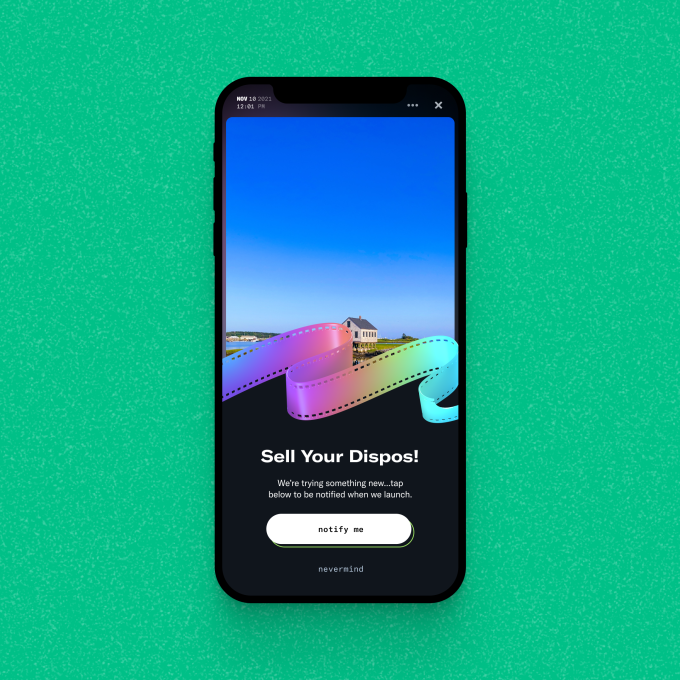
Dispo, the photo-sharing app that emulates disposable cameras, started rolling out a test yesterday that will record user interest in selling photos as NFTs. Some users will now see a sell button on their photos, and when they tap it, they can sign up to be notified when the ability to sell Dispo photos launches.
CEO and co-founder Daniel Liss told TechCrunch that Dispo is still deciding how it will incorporate NFT sales into the app, which is why the platform is piloting a test with its users. Dispo doesn’t know yet what blockchain it would use, if it would partner with an NFT marketplace or what cut of sales Dispo would take.
“I think it’s safe to say from the test that there will be an experience native to the Dispo app,” Liss said. “There are a number of ways it could look — there could be a native experience within Dispo that then connects through an API to another platform, and in turn, they’re our partner, but to the community, it would look native to the Dispo app.”

Image Credits: Dispo
This marks a new direction for the social media app, which seeks to redefine the photo-sharing experience by only letting users see the photos they took at 9 AM the next morning. From Dispo’s perspective, this gimmick helps users share more authentically, since you take one photo and then you’re done — the app isn’t conducive to taking dozens of selfies and posting the “best” image of yourself. But though it only launched in December 2019, Dispo has already faced both buzzy hype and devastating controversy.
Until about a year ago, the app was called David’s Disposables, named after co-founder and YouTuber David Dobrik. The app was downloaded over a million times in the first week after its release and hit No. 1 on the App Store charts. In March 2021, the app dropped its waitlist and relaunched with social network features, but just weeks later, Insider reported sexual assault allegations against a member of Vlog Squad, Dobrik’s YouTube prank ensemble. In response, Spark Capital severed ties with the company, leading to Dobrik’s departure. Other investors like Seven Seven Six and Unshackled Ventures, which contributed to the company’s $20 million Series A round, announced that they would donate any profits from their investments in Dispo to organizations working with survivors of sexual assault.
Liss told TechCrunch in June, when the company confirmed its Series A, that Dobrik’s role with the company was as a marketing partner — Liss has been CEO since the beginning. In light of the controversy, Liss said the app focused on improving the product itself and took a step back from promotion.
According to data from the app analytics firm SensorTower, Dispo has reached an estimated 4.7 million global installs to date since launch. Though the app saw the most downloads in January 2020, when it was installed over 1 million times, the app’s next best month came in March 2021, when it removed its waitlist — that month, about 616,000 people downloaded Dispo. Between March and the end of August, the app was downloaded around 1.4 million times, which is up 118% year over year compared to the same time frame in 2020 — but it should be expected that this year’s numbers would be higher, since last year, the app’s membership was exclusive.

Image Credits: Dispo
Now, with the announcement that Dispo is pursuing NFTs, Liss hopes that his company won’t just change how people post photos, but what the relationship will be between platforms and the content that users create.
“Why NFTs? The most powerful memories of our lives have value. And they have economic value, because we created them, and the past of social media fails to recognize that,” Liss told TechCrunch. “As a result, the only way that a creator with a big following is compensated is by selling directly to a brand, as opposed to profiting from the content itself.”
Adding NFT sales to the app offers Dispo a way to profit from a cut of user sales, but it stands to question how adding NFT sales could impact the community-focused feel of Dispo.
“I think there is tremendous curiosity and interest,” Liss said. “But these problems and questions are why we need more data.”
-
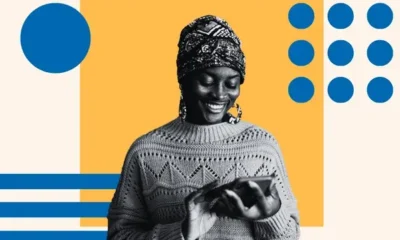
 MARKETING6 days ago
MARKETING6 days agoA Recap of Everything Marketers & Advertisers Need to Know
-

 PPC4 days ago
PPC4 days agoHow the TikTok Algorithm Works in 2024 (+9 Ways to Go Viral)
-

 SEARCHENGINES5 days ago
SEARCHENGINES5 days agoGoogle Started Enforcing The Site Reputation Abuse Policy
-

 SEO5 days ago
SEO5 days agoBlog Post Checklist: Check All Prior to Hitting “Publish”
-

 MARKETING4 days ago
MARKETING4 days agoHow To Protect Your People and Brand
-

 SEO3 days ago
SEO3 days agoHow to Use Keywords for SEO: The Complete Beginner’s Guide
-

 PPC5 days ago
PPC5 days agoHow to Craft Compelling Google Ads for eCommerce
-

 SEARCHENGINES6 days ago
SEARCHENGINES6 days agoGoogle Says Again, Sites Hit By The Old Helpful Content Update Can Recover






